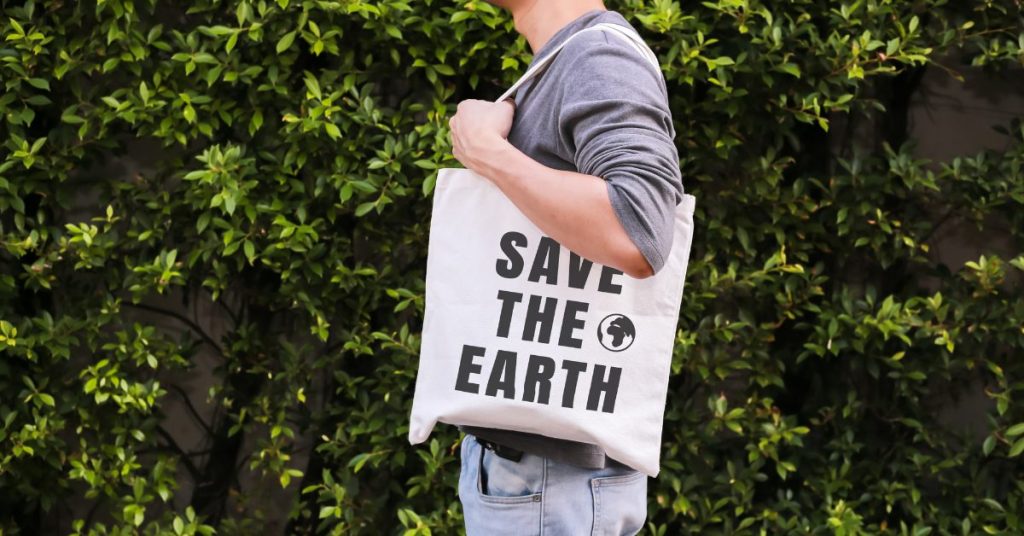The commerce industry is rife with greenwashing, a sneaky tactic where companies slap on a “green” label to lure you in, while their practices remain far from planet-friendly.
This deception not only harms our planet, contributing to pollution and resource depletion, but it also threatens the health and well-being of our family and future generations.
This blog post is your guide to becoming a discerning detective in the world of eco-friendly home improvement, empowering you to differentiate genuine sustainability from deceptive marketing ploys.
How Companies Trick You with Eco-Speak
Greenwashing isn’t always obvious. While many companies are making genuine strides towards sustainability, others may employ various tactics to make their products seem greener than they actually are.
Let’s unravel some of these common tactics so you can confidently navigate the marketplace and make informed choices that align with your values.
They May Use Vague Vocabulary
Terms like “eco-friendly,” “natural,” “sustainable,” and “green” are often used without clear definitions or supporting evidence.
The Imagery Illusion
Images of lush forests and sparkling water on product packaging often have no relation to the product’s actual impact. It only serves as a smokescreen for unsustainable practices.
The Hidden Trade-Off Hustle
Some companies highlight a single eco-friendly aspect while ignoring other harmful impacts. For instance, they may use a commonly used eco-friendly term to describe a product. At closer inspection, you may find that the product contains some harmful elements.
Becoming a Greenwashing Detective: Your Guide to Spotting Eco-Fakers
Now that you’re familiar with common greenwashing tactics, let’s equip you to spot them.
Don’t Be Seduced by Buzzwords
Look for specific details, not just vague terms like “eco-friendly” or “natural.” What exactly makes the specific product sustainable? How is it manufactured? What are its environmental impacts?
Demand Proof, Not Promises
Don’t just take a company’s word for it. Ask for data, certifications, and third-party verification to back up their claims.
Scrutinize the Fine Print
Greenwashing often hides in the details. Read product labels and marketing materials carefully, looking for vague language, misleading comparisons, or irrelevant claims. If a claim seems too good to be true, it probably is.
Beware of “Green” Images
Just because a product has a picture of a tree on it doesn’t mean it’s good for the environment. Look for concrete information about the product’s environmental impact, not just pretty pictures.
The Power of Third-Party Labels
Third-party certifications or labels provide a reliable way to assess a product’s credentials.
- LEED (Leadership in Energy and Environmental Design): Certifies buildings that meet high standards for energy efficiency, water conservation, and indoor environmental quality.
- Energy Star: Identifies appliances and electronics that meet strict energy efficiency guidelines.
- Forest Stewardship Council (FSC): Certifies wood products that come from responsibly managed forests.
- CARB (California Air Resources Board): This certification sets strict limits on formaldehyde emissions from composite wood products, ensuring safer indoor air quality.
- NAUF (No Added Urea Formaldehyde): This label indicates that a composite wood product doesn’t contain any added urea formaldehyde, a common adhesive known for releasing harmful emissions.
- E1 & E0: These European standards measure formaldehyde emissions from wood products. E1 is the standard limit, while E0 signifies extremely low emissions, indicating a healthier choice.
- ISO 14001: This international standard certifies companies that have implemented robust environmental management systems to minimize their environmental impact throughout their operations.
Unmasking True Sustainability: Digging Deeper into Company Practices
Truly sustainable companies go beyond greenwashing buzzwords and demonstrate their commitment through concrete actions and transparent communication. Here’s how to dig deeper and uncover the truth:
Third-Party Labels Matter
Independent certifications from reputable organizations validate a company’s sustainability claims. Industry specific certifications demonstrate a commitment to rigorous environmental and social standards.
Data Tells the Story
Truly sustainable companies go beyond claims by providing transparent data and undergoing regular independent testing to verify their environmental impact.
Track Record Speaks Volumes
How long has the company been committed to sustainability? Are they constantly improving their practices and setting ambitious goals? A long-standing track record of environmental responsibility is a strong indicator of genuine commitment.
Educating for Empowerment
Truly sustainable companies understand that informed consumers are key to a greener future. Look for companies that go beyond selling products and actively educate their audience about sustainable living. Do they offer resources, guides, or workshops on topics like reducing waste, conserving energy, or choosing eco-friendly materials? This commitment to demonstrates a deeper understanding of the interconnectedness between consumer choices and environmental impact.
By being a vigilant consumer and doing your research, you can avoid falling for greenwashing traps and make choices that truly benefit your home and the planet.
Remember, every purchase is a vote for the kind of world you want to live in.

Marzanne is our eco-enthusiast with an unwavering love for all things green! 🌱 As a self-proclaimed “green queen” and a DIY aficionado, her zeal for eco-conscious living shines through in every aspect of her life. ♻️
Join Marzanne as she shares her quirky, eco-infused adventures, offering tips, tricks, and a sprinkle of good-natured humor on integrating sustainable products, green design, and eco-friendly living into your home. She’s the green-spirited friend you never knew you were missing! 🌿🏡😄


